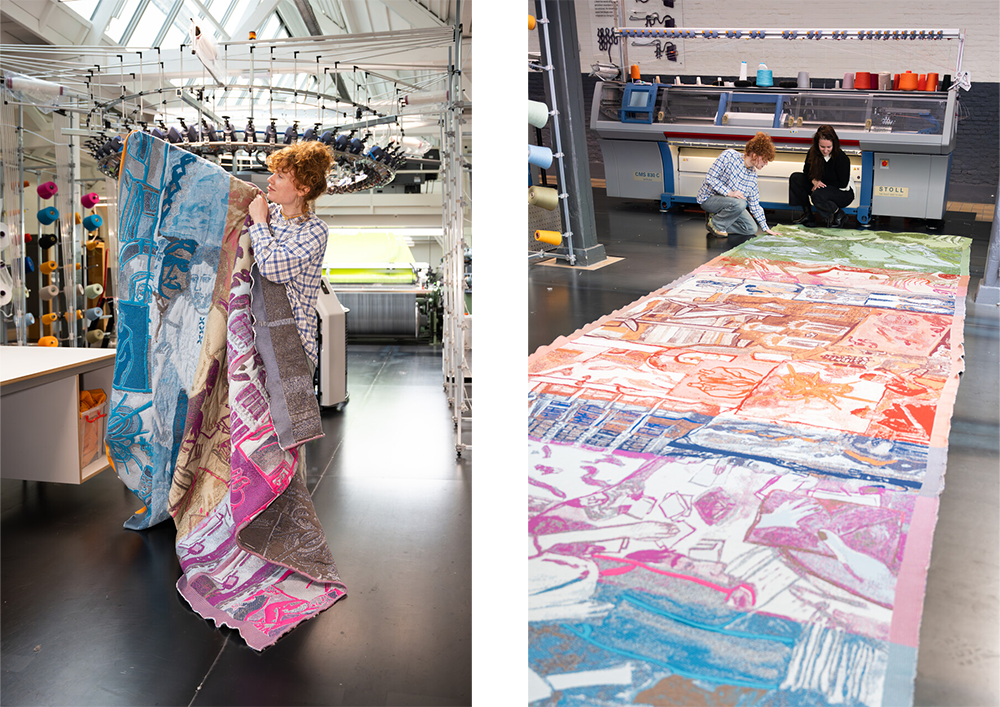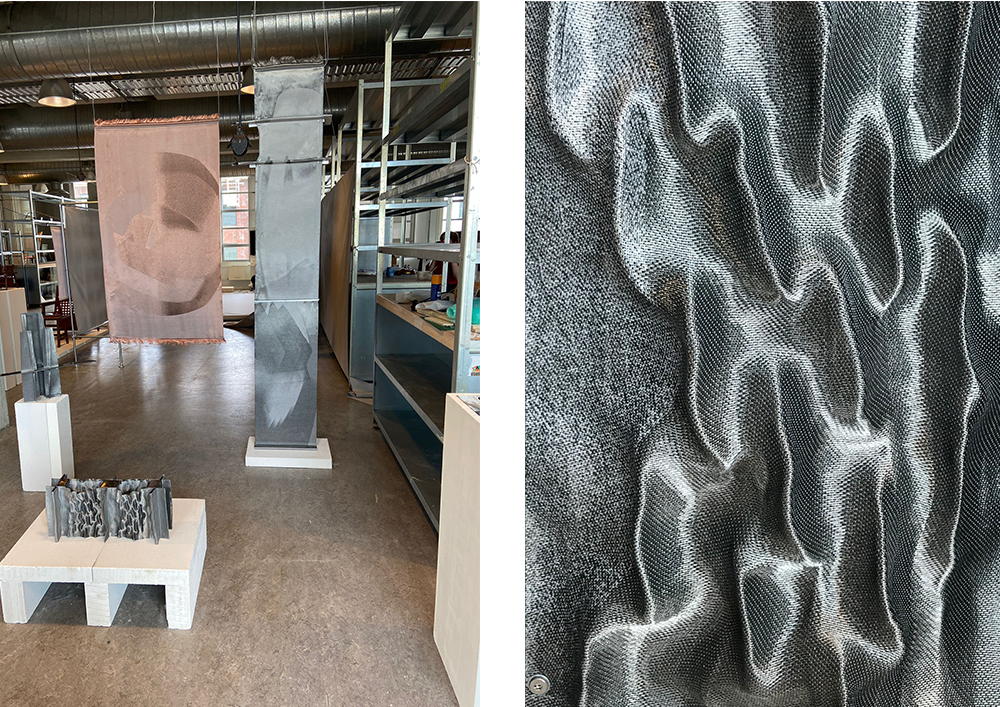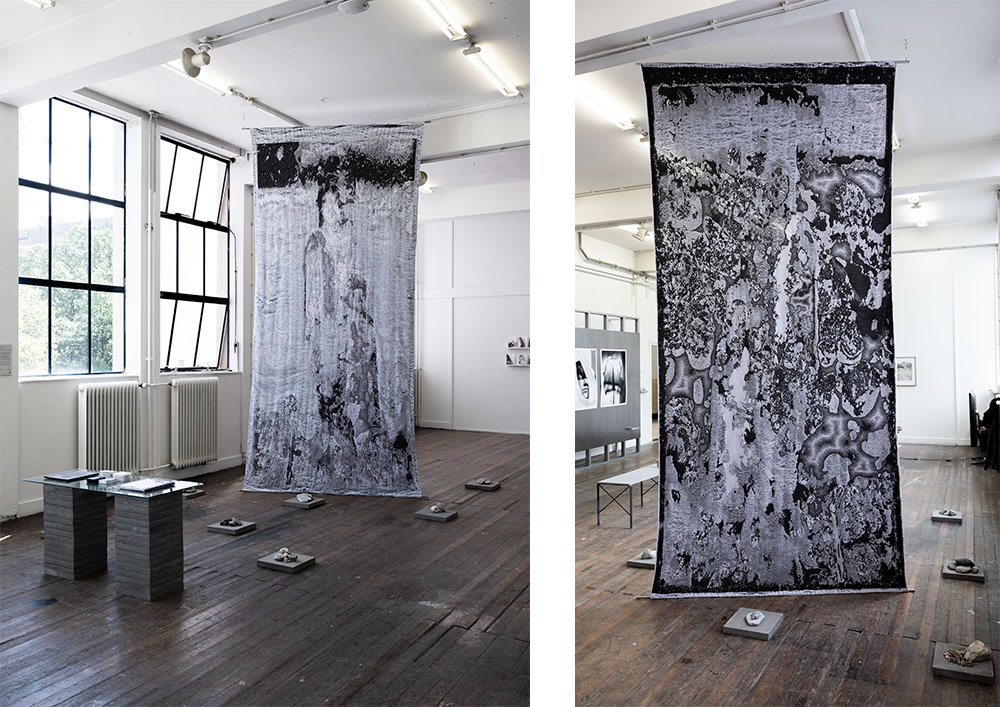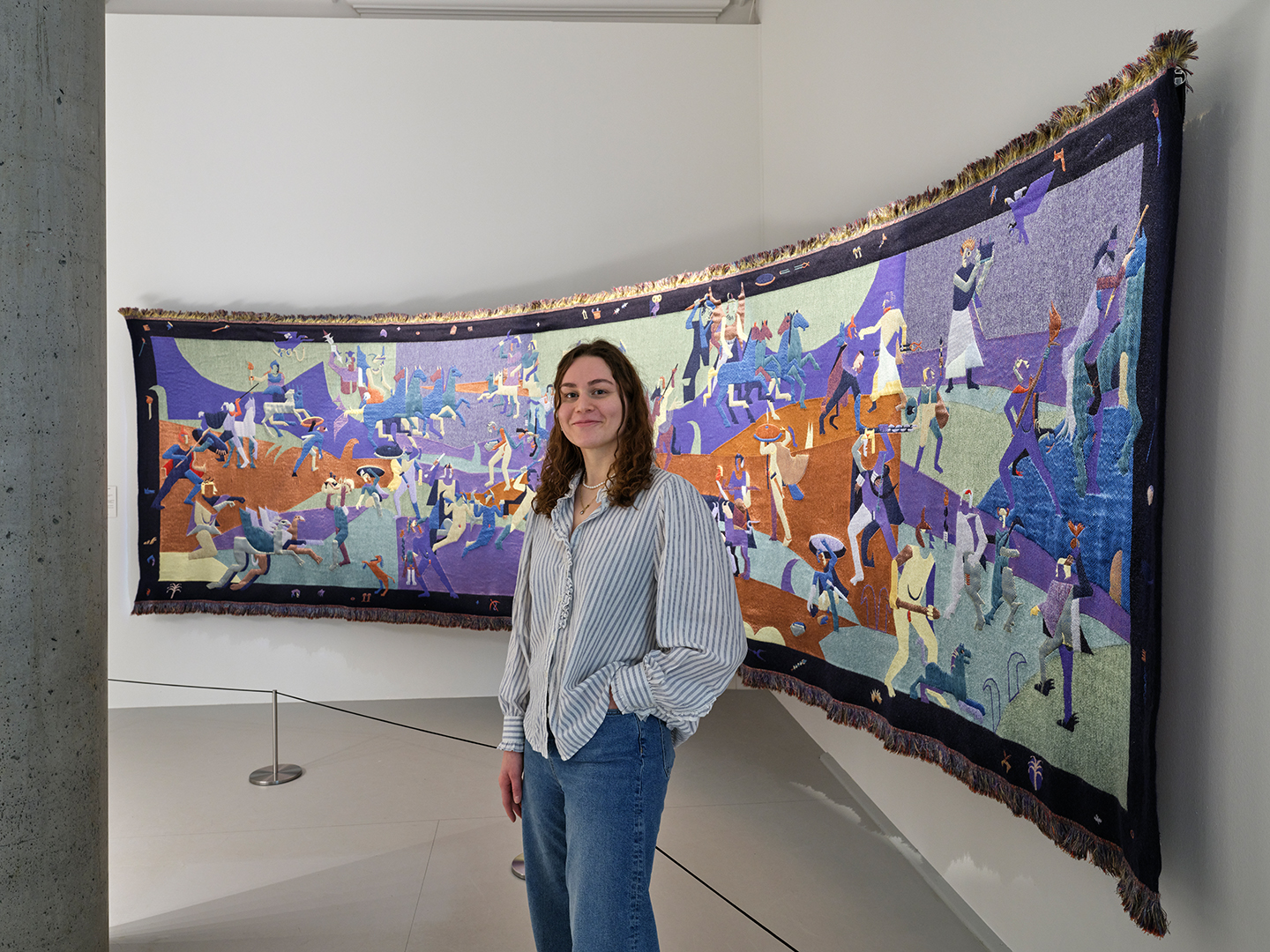Would you like to graduate with a unique textile project? Those who submit an application by October 1st have the chance to start working in the lab this winter, under the guidance of one of our product developers in knitting or weaving
Now that the academic year has started, there is space in the lab for a new group of graduates. A total of twelve spots are available for students who want to work on their graduation project in knitting or weaving with us. Soon, we will be selecting the first six projects for development in November, December, and January. The deadline for this is October 1st, so quick decision-makers can still submit an application. Students graduating in the summer can also apply by March 1st to start in April, May, or June. You can find all the details on this page. To give an idea of what a work period at the TextielLab can offer, below are four highlighted graduation projects from the past year.

Warm Fresco
Madelon Verbeek completed her master’s degree at the Academy of Fine Arts in Oslo with the project Å bli varm i trøya. This translates to ‘getting warm in the sweater,’ a Norwegian saying about feeling at home somewhere. Verbeek, who moved from Tilburg to Oslo, returned to her former hometown for the development of her graduation project. In the TextielLab, she collaborated with product developer Matilde Vandenbussche to create a gigantic textile ‘fresco’ on the circular knitting machine, preserving the painterly quality of the original image. The rug, over eight meters long, addresses having two places to call home, the dilemma of staying or leaving, and the art of settling down somewhere. It was exhibited at Kunsternes Hus in Oslo, where Verbeek won two grants.

Insertion of Metal
French designer Valentin Avon graduated from the Design Academy Eindhoven with Symbiosis of Things. This project demonstrates that symbiosis can encompass much more than just living organisms. A chain of polyester combined with an insertion of copper and stainless steel forms an intriguing relationship, giving rise to a new language of shapes. What comes from the weaving machine can be folded like fabric, but also shaped like metal. In collaboration with product developer Marjan van Oeffelt, Avon developed a strong textile that can be applied to furniture, objects, and clothing. The metal yarn is aesthetically and functionally interesting: it provides a unique sheen, interacts with the light, and allows the textile to stand independently. Symbiosis of Things is one of twenty nominees for the Dorothy Waxman Prize.


Will you be the next TextielLab graduate?